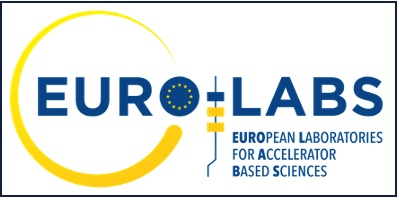Description
A wealth of theoretical models, both phenomenological and from first principles, have been developed in order to predict the various properties of the atomic nucleus. In order to test modern nuclear theory, experimentalists need to push towards the most exotic nuclei for benchmarking these predictions.
In this regard, Collinear Laser Spectroscopy (CLS) has proven to be a powerful technique for probing exotic radionuclides. With a single measurement of a hyperfine spectrum, the nuclear spin, electromagnetic moments, and charge radius of a particular atomic species can be extracted.
The Multi Ion Reflection Apparatus for Collinear Laser Spectroscopy (MIRACLS) is a new experimental setup in the ISOLDE facility at CERN which aims to improve the sensitivity of conventional CLS by conducting it in a high-energy (> 10 keV) multi-reflection time-of-flight (MR-ToF) device [1, 2], a type of ion trap which utilizes two electrostatic mirrors to reflect ion bunches back and forth for several thousands of revolutions. In this configuration, we gain a sensitivity boost compared to conventional CLS since ion bunches are “recycled” after each revolution. As a result, exotic radionuclides with very low production yields become accessible, such as the magnesium isotope $^{34}$Mg, which will be the first physics case of MIRACLS and will give fresh insights on the “island of inversion” around the $N=20$ neutron shell closure.
Besides CLS, the high-energy MR-ToF device at MIRACLS can also be used for highly selective, high-flux mass separation to provide purified beams of radioactive isotopes [3]. These pure beams are a requirement for other experimental programs such as PUMA, which aims to exploit antiprotons to probe the surface effects of atomic nuclei such as halo nucleons or neutron skins [4].
In this poster, I will describe the operating principles of MIRACLS and show the results of our first online measurements.
References
[1] Simon Sels et al. “First steps in the development of the multi ion reflection apparatus for collinear laser spectroscopy”. In: NIMA B 463 (2020), pp.310-314.
[2] F.M. Maier et al. “Simulation studies of a 30-keV MR-ToF device for highly sensitive collinear laser spectroscopy”. In: NIMA A 1048 (2023).
[3] F.M. Maier et al. “Increased beam energy as a pathway towards a highly selective and high-flux MR-ToF mass separator”. In: NIMA A 1056 (2023).
[4] T Aumann et al. “PUMA, antiProton unstable matter annihilation". In: Eur. Phys. J. A 58.5 (2022), p. 88.
| Work-package | WP2 - RIs for Nuclear Physics |
|---|---|
| Facility identifier | ISOLDE |
